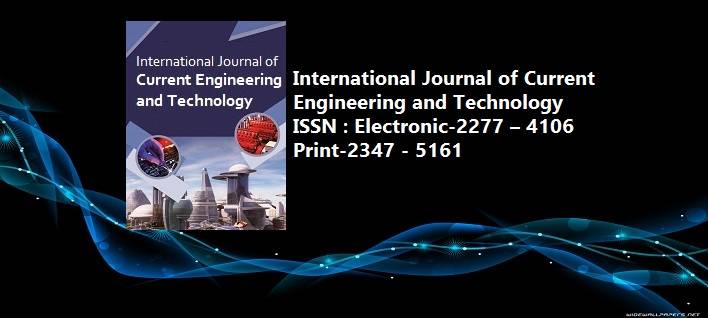Effective Criteria for Seismic Rehabilitation Planning of Road Transportation Infrastructures
Mohammadreza Yadollahi*a , Rosli Mohamad Zinb and Mohammad Sadegh Asgari Kachousangic
aDepartment of Structure and Materials, Faculty of Civil Engineering, Universiti Teknologi Malaysia, Johor 81310, Malaysia.
bConstruction Technology and Management Centre, Universiti Teknologi Malaysia, Johor 81310, Malaysia.
cSchool of Engineering and Applied Science, Columbia University, USA.
*Corresponding author’s Email: ymoham@live.utm.my
Abstract
While seismic rehabilitation process for road infrastructures has been traditionally based on seismic factors, consideration of non-seismic factors is necessary for reliable project ranking. Non-seismic factors include socioeconomic criteria, determining the value of a project to its users’ community. Based on the information obtained from a questionnaire survey and literature review, this paper identifies a set of effective rehabilitation criteria (RC) for seismic rehabilitation decision-making to develop a priority index that is applied to determine the rehabilitation priority. The identified RC will then be weighted for four types of road structures including bridges, tunnels, retaining walls, and buildings. The results can be generalized to provide valuable insights for policy makers concerned with transportation infrastructure planning, especially in developing countries where project prioritization is often an issue. To underline the value of the study, the weighted RC are applied in ranking road rehabilitation projects in an illustrative example.
Keywords: Road Infrastructure, Seismic Rehabilitation Planning, Effective Criteria, Decision Making, Prioritization.
1. Introduction
Pertaining to rehabilitation planning for risk mitigation in road network, the prioritization of road structures is a typical measure for government project managers for different purposes such as optimal budget allocation. The word “rehabilitation” in this study refers to a technical strategy or approach for developing rehabilitation measures for a structure to improve seismic performance before or after an earthquake. This process may include modifications of existing components or installation of new components to address the deficiencies identified during a seismic risk evaluation in order to achieve a selected rehabilitation objective. Rehabilitation strategy depends on selected criteria and may include a range of activities such as repairing, retrofitting, abandoning, replacing or even doing nothing.
Selecting the most effective criteria in order to evaluate the rehabilitation alternative has been always challenging. Such criteria must be considered from the perspectives of society, economy, manpower, environment, market and policy, etc. (Teng et al., 2010). Moreover, the prioritization process for seismic rehabilitation purposes depends on the evaluation of in-service performance and economic criteria. These criteria are mainly related to the financial issues such as the amount of initial capital resources, the economic service life of the particular alternative, the predicted annual maintenance costs and the life cycle costs. To support this, Shohet & Perelstein (2004) evaluated the rehabilitation projects according to six quantitative criteria (e.g. level of performance, duration of the rehabilitation work and etc.) in order to find the best rehabilitation alternatives in buildings.
2. Guides and Codes
Whilst the seismic rehabilitation process of road infrastructures is extremely costly and time-consuming (Elhag & Wang, 2007; Gokey et al., 2009), selecting appropriate criteria that maintain an advantageous contribution to rehabilitation priorities is important. The necessity of paying attention to choose appropriate criteria is due to three main reasons: First, in most cases, high numbers of road assets require rehabilitation. Second, limited financial and human resources are available to perform rehabilitation tasks; and, third, uncertainties about the weight factors can affect the rehabilitation process. In most cases, criteria selection and weighting is associated with conflict, mobility, comparability and relativity. Failure in reliable weighting of the criteria for seismic assessment may result in an increased risk of failure during an earthquake. In fact, engineering and societal judgment are the critical keys to this stage of the ranking process. Nevertheless, a prioritization method that solely relies on decision makers’ instincts may be subject to failure and result in costly consequences.
2.1 RC Identification in Relative Manuals, Guides and Codes
According to Parts 1 and 2 of the FHWA (2008), the objective of a screening and prioritization program is to determine what structure (or set of structures) should be rehabilitated first. This manual introduces different rehabilitation factors for bridges, tunnels, retaining walls, culverts, slopes and roadways. It has been stipulated that the introduced criteria do not represent an exhaustive list, but illustrate some of the principles involved in assigning priorities. In addition, FEMA 366 (2008) states that the ability to correlate population density and annualized loss are two useful factors for developing policies, programs and strategies to minimize socio-economic loss from earthquakes. Hence, the ability to examine annualized loss in terms of demographic parameters such as ethnicity, age, and income are other important issues.
2.2 RC Identification from the standpoint of Researchers
Much research has been in progress to probe into the development of the subject of the seismic rehabilitation for road infrastructures over the past few decades. However, among all these studies, only some of them introduced new criteria for seismic rehabilitation rating procedure. Vieira et al. (2000) defined the importance of tunnels and bridges as a function of public safety, emergency response, long-term economic impacts and interference with other lifelines. In general, the selection and prioritization of projects for seismic rehabilitation must be addressed with a systematic method for the optimal allocation of budget and other resources (Yadollahi & Zin, 2012). Moore (1994) prioritized the RC and provided technical information and methodologies to help in planning and organizing resources for road rehabilitation projects.
Conclusions
It is important to develop measures to help to mitigate probable risks and consequences of the seismic damages to road infrastructures. Finding the most critical and important structures in road network for repair or rehabilitation tasks has been one significant challenge facing transportation managers and practitioners. This is mostly because of a variety of factors and criteria that affect the rehabilitation decision-making process. The qualitative part of the proposed seismic rating method modifies the rank in a subjective way that takes into account different factors for inclusion in an overall priority index. Hence, the priority index is a function of rank, importance, and other factors.
This study describes the writers’ efforts in identify the most effective rehabilitation criteria for the seismic rehabilitation of road infrastructures in terms of numeric weighted values. Accordingly, through relevant references and documents, 20 weighted criteria (also known as non-seismic factors) were identified that are effective on seismic rehabilitation decision-making. Experienced risk practitioners including managers, supervisors, designers, engineers and other experts in related areas were surveyed. Ranking analysis revealed that all criteria had a mean score between 4.0 and 8.0 and were mostly highlighted as being of “high”, “rather–high”, or “medium” importance levels. It is important to mention that “safety” and “seismic vulnerability” were identified as the two most important criteria in all road infrastructures. According to ranking results in four categories of road infrastructures, only one criterion in bridges was recognized as being of an “extremely high” importance level. This criterion is the “seismic vulnerability” which embraces the seismic-structural part the priority index. Meanwhile, the results indicate that “seismic vulnerability” (C19) is the second most important factor in other infrastructures. Moreover, bridges have the highest importance values in
References
Augeri, M.G., Colombrita, R., Greco, S., Lo Certo, A., Matarazzo, B., & Slowinski, R. (2010), Dominancebased rough set approach to budget allocation in highway maintenance activities. Journal of Infrastructure Systems, 17(2), 75–78.
Chen, Y., Okudan, G.E. & Riley, D.R. (2010), Sustainable performance criteria for construction method selection in concrete buildings, Journal of Automation in Construction, 19, 235-244.
Cohen, D.P.L. (2004),Maintenance and Repair Decision Making for Infrastructure Facilities without a Deterioration Model, Journal of Infrastructure Systems, 10(1), 1-8.
Croope, S.V. (2009),Working with HAZUS-MH, A working paper submitted to the University of Delaware University Transportation Centre (UD-UTC), UDUTC Working Paper.
Egbelakin, T.K. Wilkinson, S., Potangaroa, R. & Ingham, J. (2011), Challenges to successful seismic retrofit implementation: a socio-behavioural perspective, Building Research & Information, 39(3), 286–300.
Elhag, T.M.S. & Wang, Y. (2007), Risk Assessment for Bridge Maintenance Projects: Neural Networks versus Regression Techniques, Journal of Computing in Civil Engineering, 21(6), 402-409.



















 MECHPGCON, MIT College of Engineering, Pune, India
MECHPGCON, MIT College of Engineering, Pune, India AMET, MIT College of Engineering, Pune, India
AMET, MIT College of Engineering, Pune, India International Conference on Advances in Mechanical Sciences
International Conference on Advances in Mechanical Sciences  International Symposium on Engineering and Technology
International Symposium on Engineering and Technology International Conference on Women in Science and Engineering
International Conference on Women in Science and Engineering




